
In General
the Semaphore Era
After the Semaphores
Transit Signals
RAILROAD SIGNALS HOME
I need your help to complete this page, please consider contributing, contact info is below.
The history for railroad signaling is as colorful as any other (no pun intended).
Because our country was so huge compared to most in the 1800's, and every little little railroad had their own idea as to what they should do and how they would do it, we had a huge variety of signals in the United States.
Fortunately, a few styles won out and became standardized fairly quickly.
This is a page which will be of interest to history buffs as well as those wishing to make their model railroad pikes historically accurate.
Semaphore signals appeared in an unusually large variety, as there were upper quadrant, lower quadrant, mechanically operated, air operated, electrically operated, and so on.....
Also, in the early days, let's not forget that G-Y-R was not always the standard. When colors were first assigned to signals, white was used for CLEAR, and green was used for APPROACH, or SLOW. Obviously, if a lens was busted out, you could see the problem with using white for clear! And in addition, purple was used in many places for the STOP indication, but usually only in dwarf signals. Today, lunar white is often used in the standard three color colorlight signal, making them a 4-aspect signal, following the G-Y-LW-R progression, where many locations have added the restricting indication. CSX seems to be using this a lot, as the old CPL signals used lunar white for the reverse 45 position for RESTRICT.
After the semaphores came a plethora of signal types: colorlights, searchlights, position lights (PL's), and color position lights (CPL's).
Colorlight signals were made by everyone. They could be vertical as most railroads employed, or horizontal as the CNW did. They could have any number of aspects on one head, three was the norm. In a typical interlocking arrangement, three 3 color heads would be mounted on top of one-another.
A variation of the colorlight signal was the GRS type-G signal, where the three lenses were arranged in a triangular format, with red on the bottom, and (usually) green to the right of the two on top. This signal is also called a "tri-light" signal by many, altho C&S people call them colorlights. I have been called to task for using the term tri-light, because the purists will tell you they are all tri-lights (not true), and besides, a US&S type G signal is a CPL.
Searchlight signals were manufactured by two main players: GRS and US&S. It uses one set of lenses, and has a miniature semaphore like mechanism to place 2 or 3 1" lenses in the light path to produce the desired color. They also use a smaller lamp (typically 10 watts vs 25 watts in a standard signal) because the lenses are very focused, and they use a reflector. There were favored by many western railroads who had signals way out in the middle of no-where in the days when the C&S guys had to go out and replace batteries on a regular basis because there was no local power to charge the batteries. Periodic calibration and adjustment of these types led to their eventual demise.
A variation on the searchlight signal was introduced relatively late (in railroad signal development time) by Safetran, called the Unilens.
Position Lights were developed by the Pennsylvania RR, and was seen on the N&W, Reading, and the Long Island Railroads. The signals employed one or two "heads" consisting of three to seven lamps assemblies, to produce an visual indication resembling that of the semaphore. Both NS and the LIRR has been aggressive in replacing the PL signals.
The B&O RR developed their own version of a Position Light signal, using two lenses for each aspect, and using only one main signal head, but then used a system of "marker lamps" to modify the "look" for additional indications. CSX has been very aggressive in replacing CPL's with colorlights, and very few remain in 2018.
The N&W later colorized their signals in the early to mid 60's, and they then resembled the B&O CPL's. NS has been aggressive in replacing the old CPL style signals, and as of 2018, very few remain.
Amtrak also modified the Pennsy PL's by turning them into colorized signals, and many call them PCL, for Position Color Lights. The Amtrak guys just call them colorlight signals.
For you young fellas out there, sorry you didn't get to see the heyday of PL's and CPL's, just as I feel sorry for myself for not being around in the hardcore semaphore days. I was born in 1951, but didn't acquire the interest in signals until they were almost all gone!
There are also a lot of one of a kind type signals that were around, but you had/have to know where they were in order to enjoy them Most of them seemed to be in the east coast, and in the Mid-Atlantic to New York City area. Some of these can be found here:
https://railroadsignals.us/signals/unusual/index.htm
My other signal pages are here:
https://railroadsignals.us/early/index.htm common signal types before the semaphores
https://railroadsignals.us/signals/sem/index.htm
https://railroadsignals.us/signals/cpl/index.htm
https://railroadsignals.us/signals/pl/pl.htm
https://railroadsignals.us/signals/color/index.htm
https://railroadsignals.us/signals/nwcpl/index.htm
https://railroadsignals.us/signals/pcl/index.htm
https://railroadsignals.us/signals/searchlights/index.htm
https://railroadsignals.us/signals/trilights/index.htm
If you are looking for the signal indications and aspects of the various railroads, I have ~118 different books scanned here:
https://railroadsignals.us/rulebooks/rulebooks.htm
Here are some of the types which be mentioned below, the Pennsylvania RR probably has the most variety with their many forms of the PL signal.
The Pennsylvania RR Position Light (PL) Collection.....
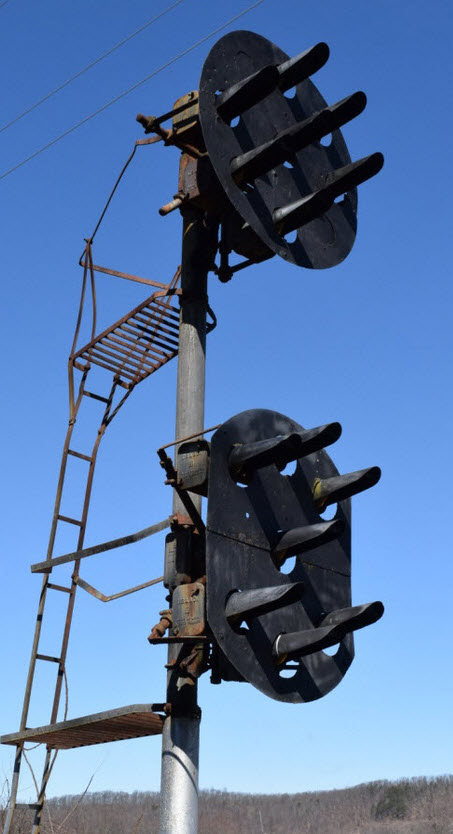 standard PL
standard PL
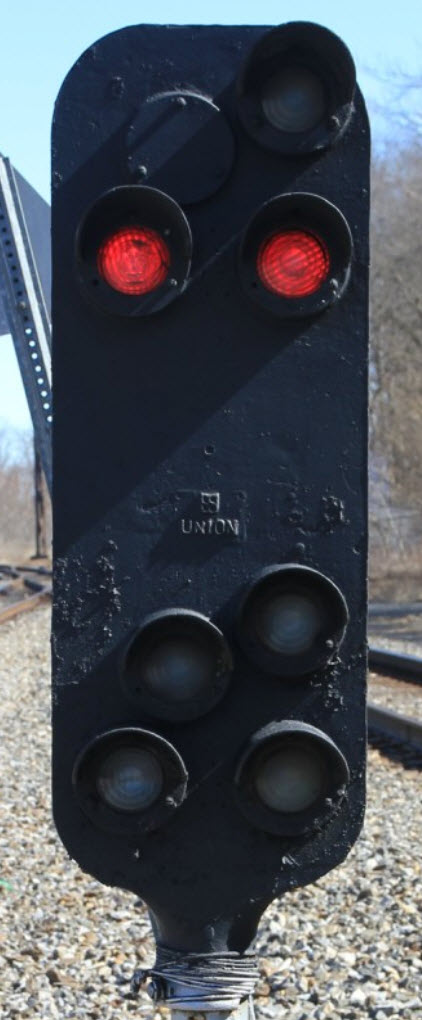 PL-5 Pedestal
PL-5 Pedestal
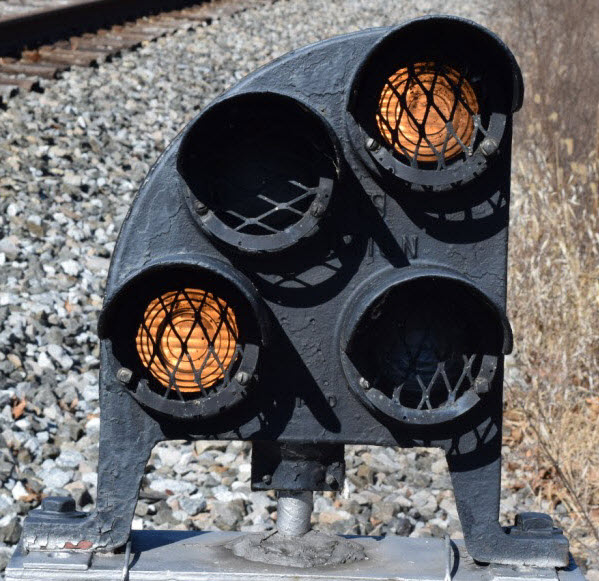 PL-4 Dwarf
PL-4 Dwarf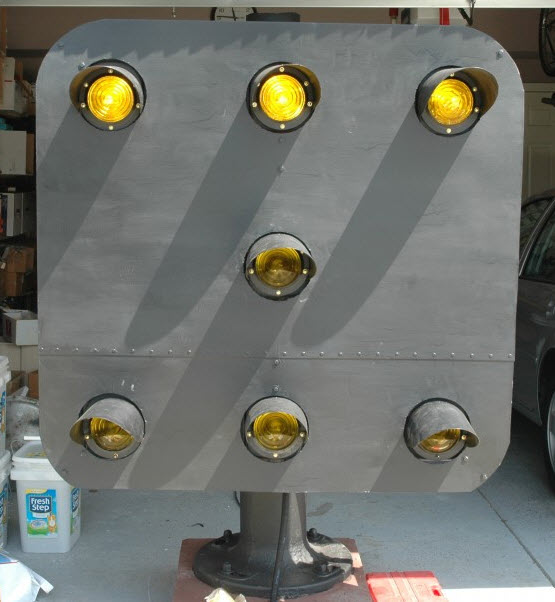 Pennsy Domino
Pennsy Domino
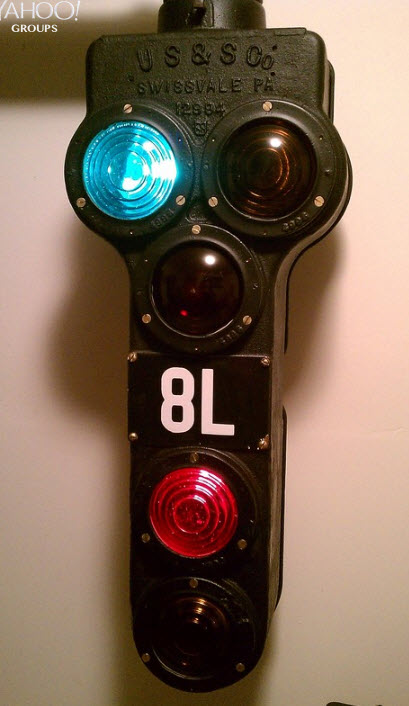 Pennsy Penn Station
Pennsy Penn Station
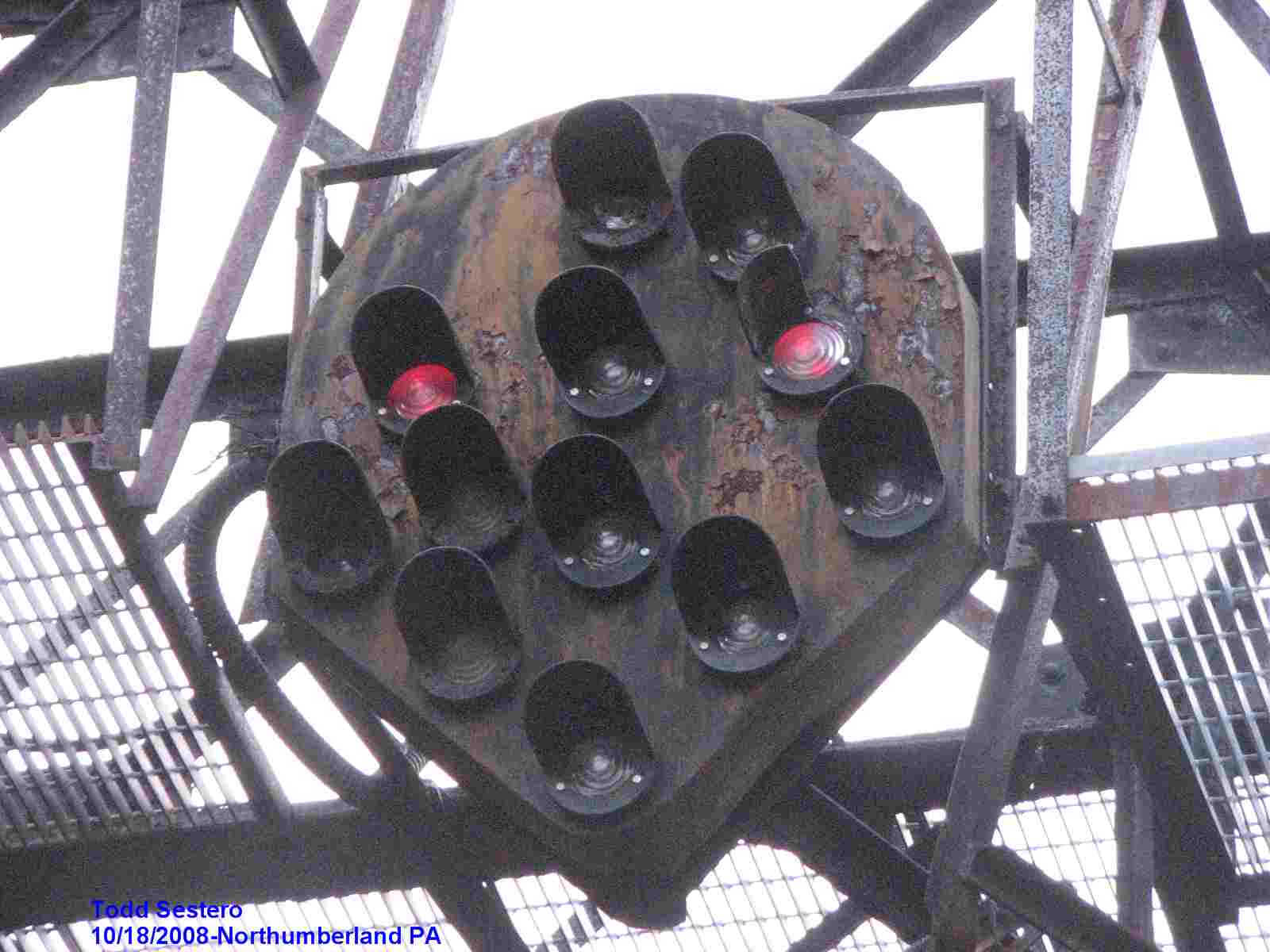 Pennsy Northumberland
Pennsy Northumberland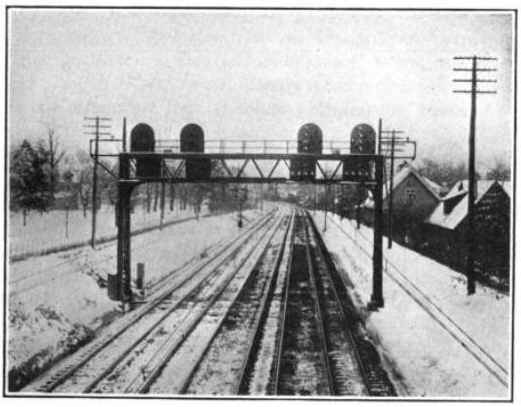 Pennsy Tombstone
Pennsy Tombstone
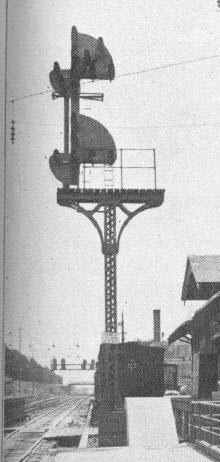
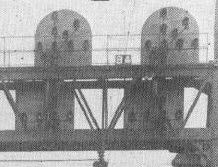
Baltimore & Ohio CPL's.....
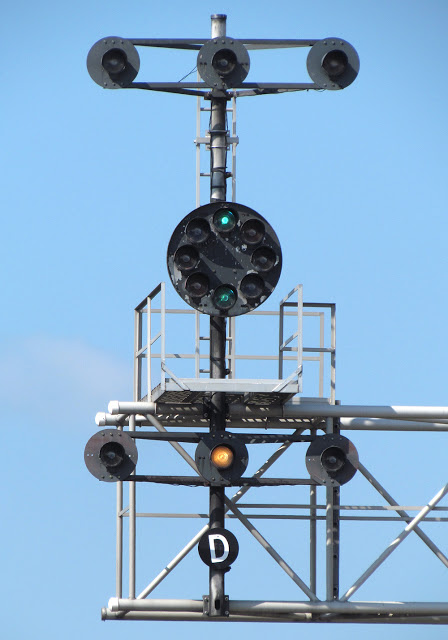 Standard
Standard
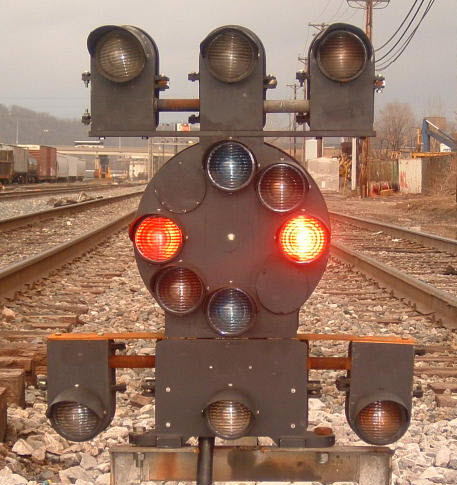 Full Dwarf
Full Dwarf
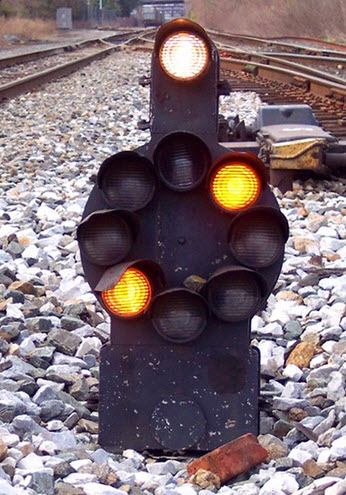 Simple Dwarf
Simple Dwarf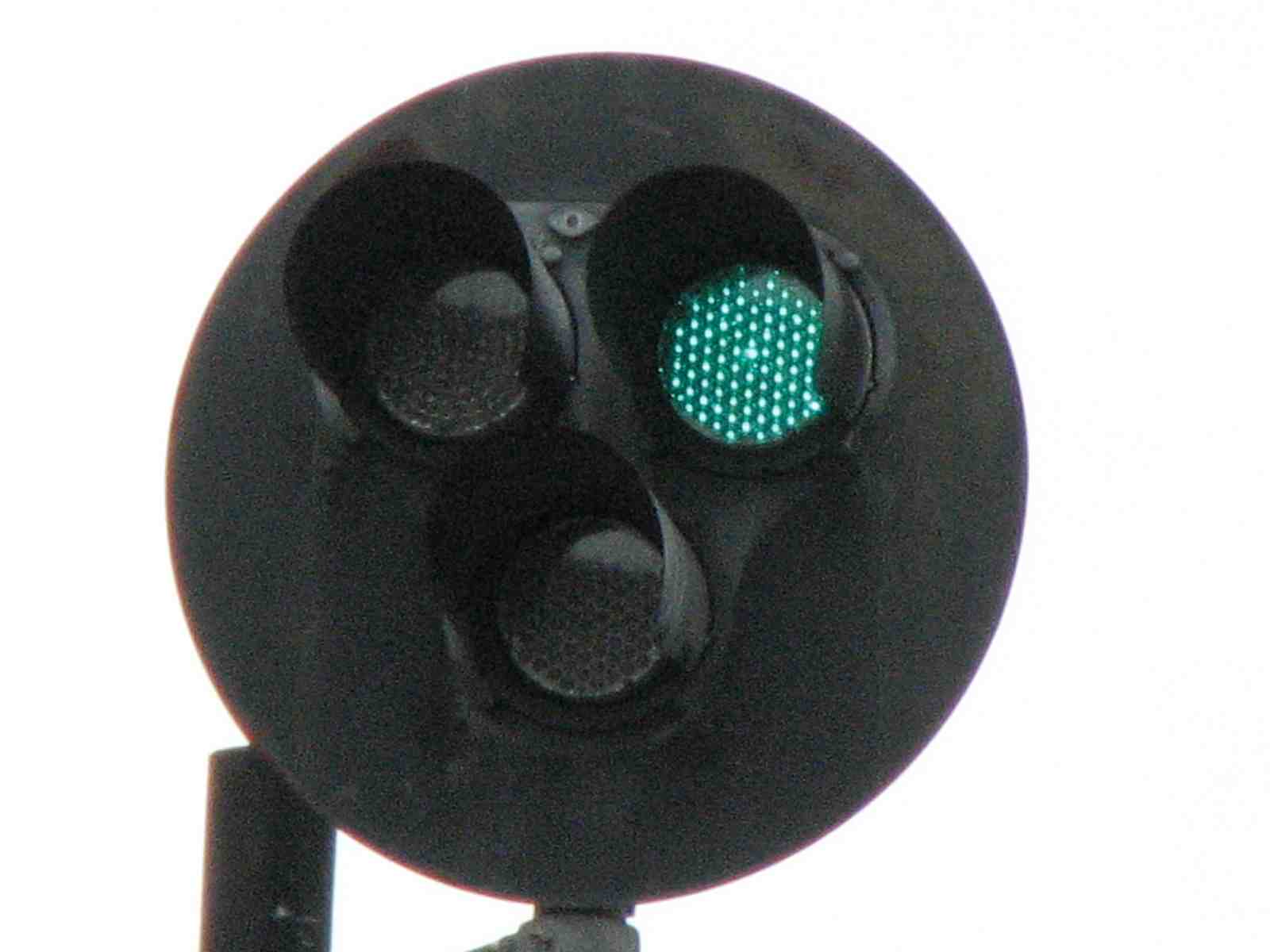
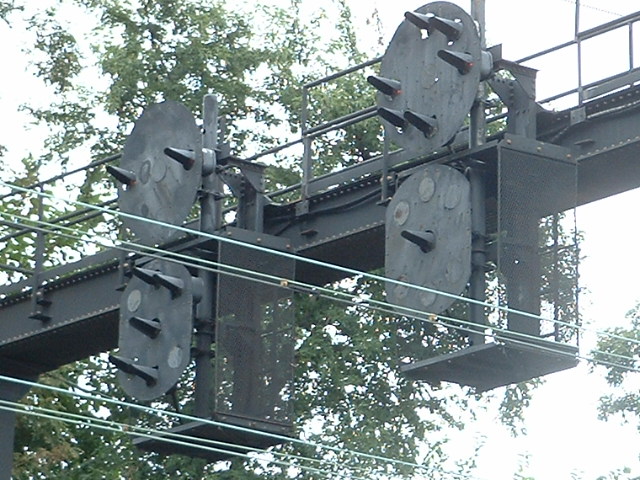 Amtrak PCL's
Amtrak PCL'sAmtrak -- NEC, between NYC and DC, Leftover Pennsy PL's, converted them to color starting in the 1980's, calling them PCL's, thru (so far) 2018.
Amtrak -- NEC, between NYC and DC, Penn Station NYC, the same miniature Pennsy PL's, thru (so far) 2018.
Amtrak -- NEC, North of MetroNorth property, mostly Tri-light style colorlights to Boston.
Amtrak -- Elsewhere, see the various host railroads.
B&O RR -- Color Position Lights, 1918 till at least 2018 in some places, replacements started in the 1990's.
Chesapeake & Ohio -- Colorlights, CSX started replacing the C&O era signals around 2008 or so.
Conrail -- See forming member railroads of the Penn Central.
Long Island -- Position Lights, 1920 or so till at least 2018 in most places, slowly being replaced by the LIRR.
Long Island -- Tri-Light style colorlights are replacing the PL signals, starting maybe around 2010.
Maryland Midland -- None except for miniature LED colorlights in the yard, They took down or left in place the WM era colorlights (guts gone).
New Haven -- Semaphores survived throughout most of the system until the Conrail era.
New York Central -- NYC to Buffalo line, GRS SA-5 Searchlights.
Norfolk & Western -- Pennsy style all yellow PL signals, 1920's till mid 60's.
Norfolk & Western -- Pennsy style colorized PL signals, now called CPL's, mid 60's, until replacements started in the 1990's thru the 2018.
Norfolk Southern -- Former N&W lines: standard 3 aspect colorlights starting in the 1990's as CPL replacements.
Penn Central -- See forming member railroads: NYC, PRR, NH, EL, LV, CNJ, PRSL, for specific types.
Pennsylvania RR -- Position Lights, 1918 till at least 2018 in some places, aggressively being replaced by NS.
Pennsylvania RR -- Red-Eye Position Lights, full size and pedestals, 1980's till at least 2018 in many places.
Pennsylvania RR -- Paoli PA to Overbrook PA, Tombstone Position Lights, 1915 into the 1930's. The very first ones used 5 lamps instead of 4.
Pennsylvania RR -- Penn Station NYC, and the approach to, special miniature versions of the PL signal, 1920's on.
Pennsylvania RR -- Northumberland PA, special compact full size Pennsy PL signal, only two in existence, 1920's till at least 2018.
Pennsylvania RR -- Union Station Chicago IL, Pennsy Domino, 1920's till 2005 or so.
Richmond, Fredericksburg & Potomac -- Colorlights, NS started replacing the RF&P era signals with newer versions starting in 2005 or so.
Western Maryland -- Colorlights, with wider backgrounds than normal.
Baltimore MD Light Rail
Reverse Colorlights (Red on the top, as with a automotive style signals)
Bar Signals (In the street where they mix with traffic)
Baltimore MD Metro Subway
Standard 2/3 transit color colorlights (Two red/one lunar).
Charlotte NC Light Rail
LED Colorlights, almost all dwarfs.
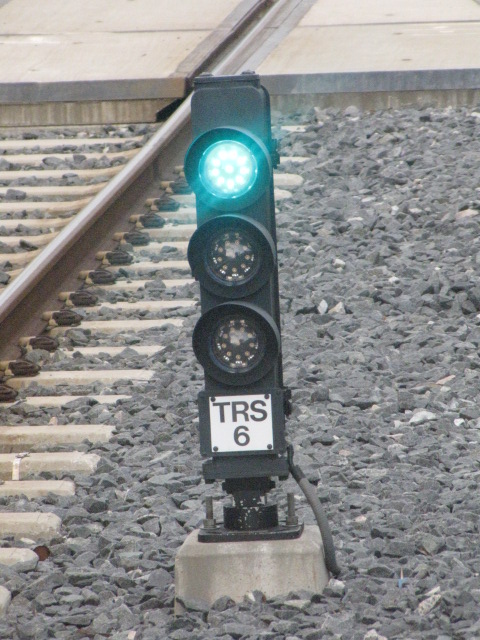
Staten Island Rapid Transit -- B&O style Color Position Lights, almost all dwarfs, even on the mainline, still holding strong in 2018.
Disclaimers:
I love trains, and I love signals. I am not an expert. My webpages reflect what I find on the topic of the page. This is something I have fun with while trying to help others. My webpages are an attempt at putting everything I can find of the subject in one convenient place.
Please Note: Since the main focus of my two websites is railroad signals, the railfan guides are oriented towards the signal fan being able to locate them. For those of you into the modeling aspect of our hobby, my indexa page has a ist of almost everything railroad oriented I can think of to provide you with at least a few pictures to help you detail your pike.
If this is a railfan page, every effort has been made to make sure that the information contained on this map and in this railfan guide is correct. Once in a while, an error may creep in :-)
My philosophy: Pictures and maps are worth a thousand words, especially for railfanning. Text descriptions only get you so far, especially if you get lost or disoriented. Take along good maps.... a GPS is OK to get somewhere, but maps are still better if you get lost! I belong to AAA, which allows you to get local maps for free when you visit the local branches. ADC puts out a nice series of county maps for the Washington DC area, but their state maps do not have the railroads on them. If you can find em, I like the National Geographic map book of the U.S..... good, clear, and concise graphics, and they do a really good job of showing you where tourist type attractions are, although they too lack the railroads. Other notes about specific areas will show up on that page if known.
By the way, floobydust is a term I picked up 30-40 years ago from a National Semiconductor data book, and means miscellaneous and/or other stuff.
Pictures and additional information is always needed if anyone feels inclined to take 'em, send 'em, and share 'em, or if you have something to add or correct.... credit is always given! BE NICE!!! Contact info is here.
Beware: If used as a source, ANYTHING from Wikipedia must be treated as being possibly being inaccurate, wrong, or not true.
RAILFAN GUIDES HOME
RAILROAD SIGNALS HOME
NEW 03/09/2018
Last Modified
13-Mar-2018